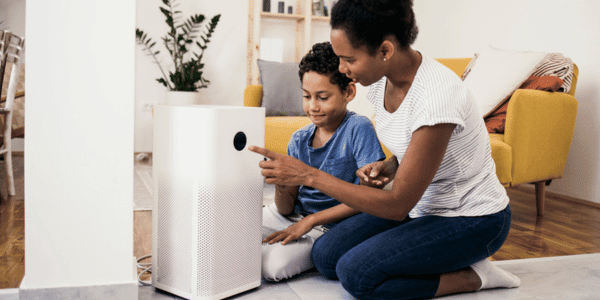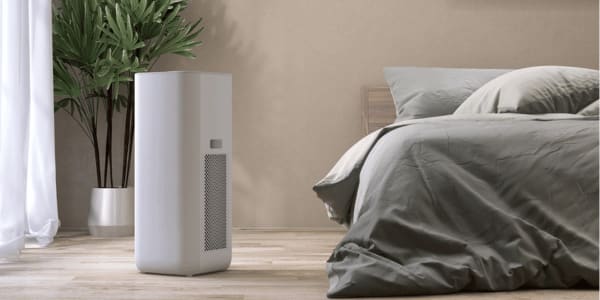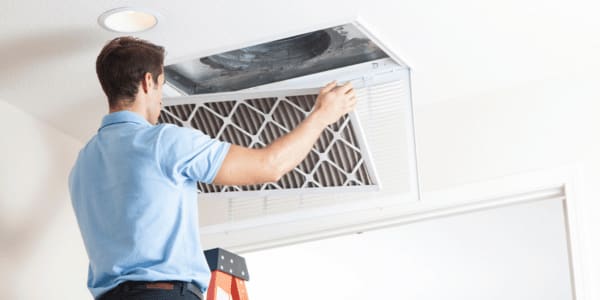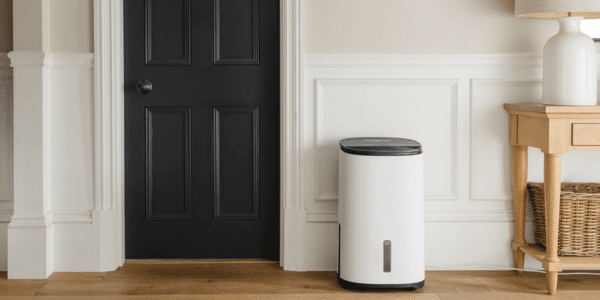Clear the Air: Devices to Boost Your In-Home Air Quality

There really is no place like home. It holds everything that makes your heart happy and does your body good. A wellness retreat all on its own, your home’s comfort level is directly affected by the air within it. The healthier the air, the better you feel. Read on to learn more about air quality and how to improve indoor air quality.
What Does Air Quality Mean?
Air quality refers to how clean the air is for the environment and people. Good quality air is free of pollutants and other hazardous substances.
United States government agencies use an Air Quality Index (AQI) to report daily and forecasted air quality levels and potential health effects. Calculated based on five major air pollutants regulated by the Clean Air Act: ground-level ozone, particle pollution, carbon monoxide, sulfur dioxide, and nitrogen dioxide, the AQI uses colors and numbers to indicate the air quality as follows:
- Green: Good, 0–50
- Yellow: Moderate, 51–100
- Orange: Unhealthy for sensitive groups, 101–150
- Red: Unhealthy, 151–200
- Purple: Very unhealthy, 201–300
- Maroon: Hazardous, 301 and higher
To check the AQI in your area, visit your local government websites or simply search “air quality near me” online.
How to Improve Indoor Air Quality
While being knowledgeable about outdoor air quality is critical, the U.S. Environmental Protection Agency (EPA) states that Americans spend approximately 90% of their time indoors—and pollutant concentrations can be two to five times higher inside. Poor indoor air quality can cause adverse health effects, so it’s important to learn how to improve indoor air quality and protect your loved ones. Here are five devices you can use to manage indoor air quality:
AIR PURIFIER
The simplest way to (literally) clear the air, an air purifier takes in polluted air; passes it through a filter that catches irritants, dust, and gases; and releases fresh air. These affordable and portable contraptions are ideal for high-traffic places but can be moved around to purify a room in less than two hours. Known to neutralize odors, reduce airborne diseases, and improve sleep, air purifiers are especially useful for pet owners, allergy or asthma sufferers, and people in smog-dense areas.
Air Purifier Benefits
- Neutralizes odors
- Improves sleep
- Reduces stress
- Eliminates pollutants
- Removes allergens
AIR FILTER
Air filters work similarly to air purifiers, forcing in air, trapping particles, and recirculating clean air. However, instead of being a standalone device, air filters are framed mesh, paper, or synthetic fiber screens that fit right into HVAC systems. Essential to healthy air and healthy HVAC equipment, air filters are a must-have and should be changed every three months, as dirty filters mean you’re breathing dirty air.
Air Filter Benefits
- Minimizes odors
- Boosts HVAC performance
- Refreshes stale air
- Controls home temperatures
- Reduces airborne illness
Air filters make your HVAC more efficient and can cut energy bill costs. Discover more ways to save on air conditioning costs now!
HUMIDIFIER
If you live in an arid climate or wake up with a dry nose or throat, it may be time to invest in a humidifier. Humidifiers speed up the natural water evaporation process, utilizing a fan to blow air through a damp filter that turns water in an attached tank into water vapor or steam. The vapor or steam is then emitted to increase humidity and add moisture to the air. These transformative tools can relieve congestion, soothe dry skin, prevent germ-spreading, and more.
Humidifier Benefits
- Moisturizes skin and hair
- Reduces snoring
- Relieves congestion
- Prevents asthma
- Controls static electricity
Using a humidifier is great for keeping your skin and hair healthy and moisturized. Want more advice about achieving a glowing complexion? Check out this summer skincare routine.
DEHUMIDIFIER
Whether you’re near a large body of water or in an older house with poor ventilation, wet environments can lead to a host of issues, like mold, structural damage, and respiratory conditions. Luckily, a dehumidifier can mitigate these problems and promote indoor comfort. The opposite of a humidifier, these machines remove excess moisture by drawing warm currents into refrigerated coils that force out moisture and condense it to liquid water. The condensation is collected in a storage tank, and dry, clean, and cool air is dispersed.
Dehumidifier Benefits
- Reduces condensation
- Improves air quality
- Minimizes energy costs
- Protects from pests and dust mites
- Combats mold and mildew
AIR QUALITY MONITOR
Air quality monitors use sensors and other components to measure your home’s air quality. These small devices can detect various air contaminants, including particulate matter, radon, carbon monoxide, carbon dioxide, formaldehyde, and volatile organic compounds, and may notify you when levels become unsafe. While air quality monitors can offer protection and insightful data, they should never be a replacement for your battery-operated carbon monoxide detector.
Air Quality Monitor Benefits
- Prevents mold and mildew
- Detects chemicals
- Ensures ventilation
- Improves sleep quality
- Analyzes pollutant patterns
Beyond Improving Air Quality: More Ways to Breathe Easy
Poor indoor air quality can be detrimental to your home and health. Luckily, being knowledgeable about the AQI and using air quality devices, like air purifiers, air filters, humidifiers, dehumidifiers, and air quality monitors, can make a big difference. Looking for more ways to help you breathe easier? Explore these relaxation techniques you can practice on the go.
Air Quality FAQs
What is an air quality alert?
An air quality alert is issued when the air has high pollutant levels. This means the air is unhealthy for the public and people should avoid outdoor activities.
How to check indoor air quality?
You can use an indoor air quality monitor, carbon monoxide detector, radon test, or mold test to check indoor air quality. There are also professional air quality testing companies that can help.
Where is air quality the worst?
The following states have the worst air quality levels:
- California
- Pennsylvania
- Texas
- Washington
- Oregon
- Alaska
- Utah




